Key Takeaways
1. Embrace a Growth Mindset: Intelligence Can Be Developed
"We need to start working with educators and children as early as possible so they can maintain a belief system that communicates that all students can succeed."
Mindset shapes success. A growth mindset, the belief that intelligence can be developed through effort and learning, is crucial for student achievement. This contrasts with a fixed mindset, which assumes intelligence is static and unchangeable.
Research shows that students with a growth mindset:
- Embrace challenges
- Persist in the face of setbacks
- See effort as a path to mastery
- Learn from criticism
- Find inspiration in others' success
Educators play a vital role in fostering growth mindsets. By consistently communicating that intelligence is malleable and praising effort over innate ability, teachers can help students develop resilience and a love for learning.
2. Neuroplasticity: The Brain's Ability to Rewire and Grow
"Neuroplasticity is the ability of the brain to change, adapt, and 'rewire' itself throughout our entire life."
The brain is adaptable. Understanding neuroplasticity is fundamental to embracing a growth mindset. The brain forms new neural connections throughout life, especially when learning new skills or facing challenges.
Key points about neuroplasticity:
- Neural connections strengthen with practice and repetition
- The brain can reorganize itself after injury
- Learning new skills creates new pathways in the brain
- Mental exercises can improve cognitive function at any age
Educators can use this knowledge to motivate students, explaining how their brains physically change and grow stronger with each learning experience. This understanding can inspire students to embrace challenges and persist through difficulties.
3. Differentiated Instruction: Meeting Students Where They Are
"Differentiation is the way a teacher responds to a student's needs so that each student is challenged at the appropriate level."
Personalized learning matters. Differentiated instruction recognizes that students have varying levels of readiness, interests, and learning profiles. By tailoring teaching methods and content to individual needs, educators can optimize learning for all students.
Key strategies for differentiation:
- Pre-assessment to gauge student knowledge
- Flexible grouping based on readiness and interests
- Curriculum compacting for advanced learners
- Tiered assignments to provide appropriate challenge
- Varied instructional strategies to address different learning styles
By implementing differentiated instruction, teachers create an inclusive environment where all students can experience growth and success, regardless of their starting point.
4. The Power of Praise: Focus on Effort, Not Intelligence
"Always praise a child's willingness to try, effort, patience, and practice. Do not attribute success to 'being smart' or 'being the best' but to hard work and perseverance."
Praise shapes mindset. The way we praise children significantly impacts their mindset and approach to learning. Praising effort and strategies, rather than innate intelligence, encourages a growth mindset and resilience.
Effects of effort-based praise:
- Increases motivation to tackle challenges
- Builds resilience in the face of setbacks
- Encourages a focus on improvement rather than comparison
- Fosters a love of learning and curiosity
Educators and parents should be mindful of their language, avoiding phrases like "you're so smart" in favor of "I can see how hard you worked on this." This shift in praise helps students internalize the value of effort and perseverance.
5. Critical Thinking: A Process, Not a Skill
"Critical thinking is a process that must be infused with content; it is not something that you can just check off a list once it is mastered."
Thinking critically evolves. Critical thinking is not a standalone skill but a complex process that develops over time and across various contexts. It involves reasoning, making judgments, and problem-solving within specific content areas.
Components of critical thinking:
- Analyzing information
- Evaluating evidence
- Synthesizing ideas
- Applying knowledge to new situations
- Reflecting on one's own thinking processes
Educators should integrate critical thinking opportunities across all subjects, providing students with chances to practice these skills in diverse contexts. This approach helps students develop adaptable thinking strategies that can be applied to new challenges throughout their lives.
6. Failure as a Learning Opportunity
"From failure, you learn, from success … not so much."
Reframe failure positively. In a growth mindset culture, failure is not seen as a negative outcome but as a valuable learning experience. Embracing failure as part of the learning process helps students develop resilience and problem-solving skills.
Ways to use failure as a teaching tool:
- Analyze mistakes to identify areas for improvement
- Encourage multiple attempts and iterations
- Celebrate the learning that comes from unsuccessful attempts
- Share stories of famous failures that led to success
- Teach reflection and self-assessment skills
By creating an environment where failure is seen as a stepping stone to success, educators can help students overcome fear of failure and develop a more adventurous, growth-oriented approach to learning.
7. Building Resilience and Perseverance in Students
"If students believe that they are welcome in advanced courses and teachers expect them to do well, they are more likely to bounce back from setbacks with increased effort and persistence."
Foster grit and determination. Resilience and perseverance are crucial traits for long-term success. Educators can actively cultivate these qualities in students by creating supportive environments and teaching specific strategies.
Strategies to build resilience:
- Set challenging but achievable goals
- Teach problem-solving skills
- Encourage positive self-talk
- Provide opportunities for students to help others
- Model resilience in the face of challenges
By helping students develop these traits, educators prepare them not just for academic success, but for life's inevitable challenges and setbacks.
8. Creating a Growth Mindset School Culture
"To work toward a growth mindset school culture is a commitment that all stakeholders must make."
Culture shapes mindsets. A school-wide approach to fostering growth mindsets is more effective than isolated classroom efforts. This requires buy-in from administrators, teachers, support staff, and parents.
Elements of a growth mindset school culture:
- Professional development on growth mindset principles
- Consistent messaging about the malleability of intelligence
- Celebration of effort and improvement, not just achievement
- Policies that support risk-taking and learning from failure
- Parent education on growth mindset principles
Creating this culture requires ongoing effort and reinforcement, but the benefits in terms of student engagement, achievement, and well-being are significant.
9. Redefining Giftedness: Potential Over Fixed Ability
"What determines whether individuals are gifted or not is not what they are but what they do."
Potential is universal. Traditional views of giftedness often focus on fixed traits or early-developed abilities. A growth mindset approach redefines giftedness as potential that can be developed over time through effort and opportunity.
Implications of this redefinition:
- More inclusive identification processes for gifted programs
- Focus on talent development for all students
- Recognition of domain-specific strengths and interests
- Emphasis on providing challenging opportunities to all
- Avoidance of fixed labels that can limit growth
This shift in perspective allows educators to nurture potential in all students, rather than focusing resources only on those identified as "gifted" early on.
10. Teaching Students About Their Brain's Potential
"I know that my brain grows like a sponge and I have to exercise my brain like my body."
Empower through knowledge. Teaching students about neuroplasticity and how their brains work can significantly impact their motivation and approach to learning. When students understand that their efforts physically change their brains, they're more likely to embrace challenges.
Ways to teach about the brain:
- Use analogies (e.g., brain as a muscle that grows stronger with exercise)
- Demonstrate neural connections through physical activities
- Discuss famous examples of people who developed skills through practice
- Incorporate neuroscience concepts into various subjects
- Encourage students to reflect on their own learning and brain growth
This knowledge gives students a sense of control over their own intelligence and learning, fostering a growth mindset and increased motivation.
Last updated:
FAQ
1. What is "Mindsets in the Classroom" by Mary Cay Ricci about?
- Focus on Growth Mindset: The book explores how adopting a growth mindset—the belief that intelligence and abilities can be developed—can transform teaching, learning, and school culture.
- Practical Strategies for Educators: Ricci provides actionable steps for teachers and administrators to foster a growth mindset in classrooms and across schools.
- Research-Based Insights: Drawing on the work of Dr. Carol Dweck and neuroscience, the book explains the science behind malleable intelligence and its educational implications.
- Tools for All Stakeholders: The book includes resources, sample lessons, and communication strategies for teachers, parents, and school leaders to support students’ belief in their own potential.
2. Why should I read "Mindsets in the Classroom" by Mary Cay Ricci?
- Evidence-Based Approach: The book is grounded in current research on brain plasticity, motivation, and learning, making it a credible resource for educators.
- Practical Application: It offers step-by-step guidance, real classroom examples, and ready-to-use activities for building a growth mindset culture.
- Addresses Common Challenges: Ricci tackles issues like fixed mindsets, failure, differentiation, and gifted education, providing solutions for diverse classroom needs.
- Benefits All Learners: The strategies are designed to help every student, regardless of background or ability, reach their full potential.
3. What are the key takeaways from "Mindsets in the Classroom" by Mary Cay Ricci?
- Intelligence is Malleable: Intelligence can be developed through effort, effective strategies, and perseverance, not just innate talent.
- School Culture Matters: Building a growth mindset requires a whole-school approach, including staff training, parent involvement, and consistent messaging.
- Differentiation is Essential: Responsive, differentiated instruction is crucial for challenging all students and supporting their growth.
- Embrace Failure and Effort: Students should be taught to view failure as a learning opportunity and to value effort over innate ability.
4. What is the difference between a growth mindset and a fixed mindset according to "Mindsets in the Classroom"?
- Growth Mindset Defined: A growth mindset is the belief that intelligence and abilities can be developed with persistence, effort, and a focus on learning.
- Fixed Mindset Defined: A fixed mindset is the belief that intelligence, skills, or talents are innate and unchangeable.
- Impact on Students: Students with a growth mindset are more likely to embrace challenges, persist through difficulties, and achieve higher levels of success.
- Impact on Educators: Teachers’ mindsets influence their expectations and instructional practices, affecting student motivation and achievement.
5. How does "Mindsets in the Classroom" by Mary Cay Ricci recommend building a growth mindset school culture?
- Staff Reflection and Training: Begin with professional development that helps staff reflect on their beliefs about intelligence and learn about brain malleability.
- Consistent Messaging: Ensure all adults in the school—teachers, administrators, support staff—use language and practices that reinforce growth mindset principles.
- Teach About the Brain: Incorporate lessons on neuroplasticity and how learning changes the brain to help students understand their own potential.
- Involve Parents: Educate parents about growth mindset and provide them with strategies to support their children’s learning at home.
6. What practical strategies does "Mindsets in the Classroom" offer for teachers to foster a growth mindset?
- Praise Effort, Not Traits: Focus praise on students’ effort, strategies, and persistence rather than labeling them as “smart” or “talented.”
- Use Preassessment and Differentiation: Regularly assess students’ prior knowledge and tailor instruction to meet their individual needs.
- Encourage Risk-Taking and Learning from Mistakes: Create a classroom environment where mistakes are seen as valuable learning opportunities.
- Model Growth Mindset: Teachers should share their own learning journeys, including struggles and perseverance, to set an example for students.
7. How does "Mindsets in the Classroom" define and implement differentiation and responsive instruction?
- Differentiation Defined: Differentiation is the way a teacher responds to a student’s needs so that each student is challenged at the appropriate level.
- Preassessment and Previewing: Teachers should use preassessments and content previews to identify students’ readiness and plan instruction accordingly.
- Flexible Grouping and Curriculum Compacting: Use flexible groups and eliminate content students have already mastered to allow for enrichment and acceleration.
- Anchor Activities: Provide meaningful, ongoing tasks for students to work on independently, supporting classroom management and deeper learning.
8. What role does critical thinking play in a growth mindset classroom according to Mary Cay Ricci?
- Critical Thinking as a Process: Critical thinking is viewed as a process involving reasoning, judgment, and problem-solving, not just isolated skills.
- Embedded in Content: Critical thinking should be integrated into all subject areas and instructional activities, not taught separately.
- Increases Motivation and Perseverance: Opportunities for critical thinking help students develop persistence and a belief in their ability to grow intellectually.
- Practical Tools: The book suggests using reasoning games, open-ended questions, and analysis of real-world scenarios to nurture critical thinking.
9. How does "Mindsets in the Classroom" suggest students can learn from failure?
- Reframe Failure: Teach students to see failure as information and a necessary part of the learning process, not as a reflection of their ability.
- Attribution Theory: Encourage students to attribute success to effort and strategy, rather than luck or innate talent.
- Celebrate Effort and Reflection: Model and praise persistence, reflection, and trying new approaches after setbacks.
- Intrinsic Motivation: Foster intrinsic rewards and autonomy, helping students find satisfaction in overcoming challenges.
10. What advice does "Mindsets in the Classroom" give for involving parents in supporting a growth mindset?
- Educate Parents: Provide information sessions, newsletters, and resources to help parents understand growth mindset and brain plasticity.
- Praise at Home: Encourage parents to praise effort, persistence, and resilience rather than innate ability or outcomes.
- Consistent Messaging: Work with parents to ensure children receive the same growth mindset messages at home and at school.
- Address Challenges: Offer strategies for parents to communicate with teachers and advocate for their child’s access to challenging learning opportunities.
11. How does "Mindsets in the Classroom" address gifted education and the growth mindset?
- Rethink Gifted Labels: The book cautions against labeling students as “gifted,” which can foster a fixed mindset and limit risk-taking.
- Focus on Potential: Emphasize talent development and the idea that all students have potential that can be nurtured with the right opportunities.
- Inclusive Access: Advocate for identification processes and instructional practices that allow all students, especially those with potential or motivation, to access advanced learning.
- Responsive Instruction: Even in gifted programs, differentiation and flexible grouping should be used to meet diverse needs and avoid complacency.
12. What are the best quotes from "Mindsets in the Classroom" by Mary Cay Ricci and what do they mean?
- “Every time you work hard and learn something new your brain grows and gets stronger.” – Emphasizes the core message that effort leads to intellectual growth.
- “Potential can never be ‘full’; it is never-ending and our possibilities are infinite.” – Reminds readers that learning is a lifelong journey with limitless possibilities.
- “Failure is necessary for success. The more we try to avoid it the less successful we are. Failure should be embraced not avoided.” – Encourages embracing setbacks as essential for growth.
- “Educators teach students, not curriculum. It is time to meet students where they are, expect the best from all of them and provide opportunities for each and every student to succeed.” – Highlights the importance of responsive, student-centered teaching.
- “A growth mindset school culture will most definitely open doors for all students.” – Summarizes the transformative impact of adopting a growth mindset in education.
Review Summary
Mindsets in the Classroom receives mostly positive reviews, with readers appreciating its practical strategies for implementing growth mindset in schools. Many find it helpful for teachers, parents, and students alike. Reviewers praise the book's focus on perseverance, pre-assessment, and differentiated instruction. Some criticize the writing quality and lack of grade-specific examples. Overall, readers find it a valuable resource for fostering a growth mindset culture in education, though some felt it could have provided more depth on certain topics.
Similar Books
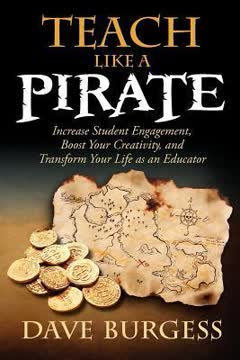

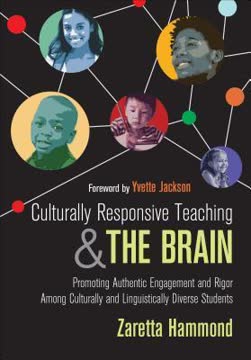
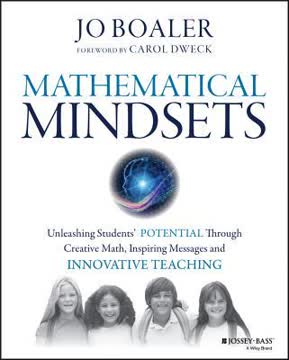
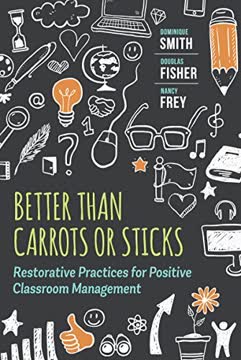




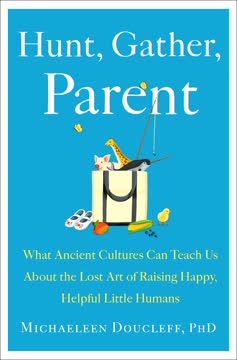
Download PDF
Download EPUB
.epub digital book format is ideal for reading ebooks on phones, tablets, and e-readers.





